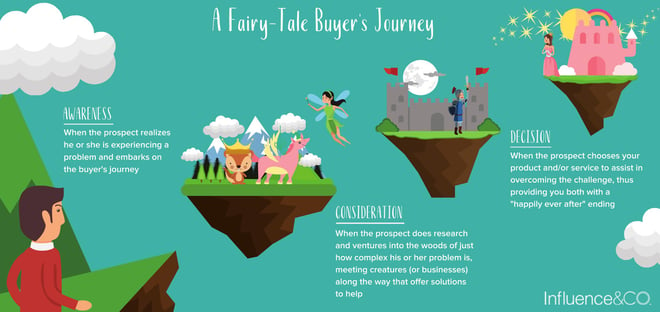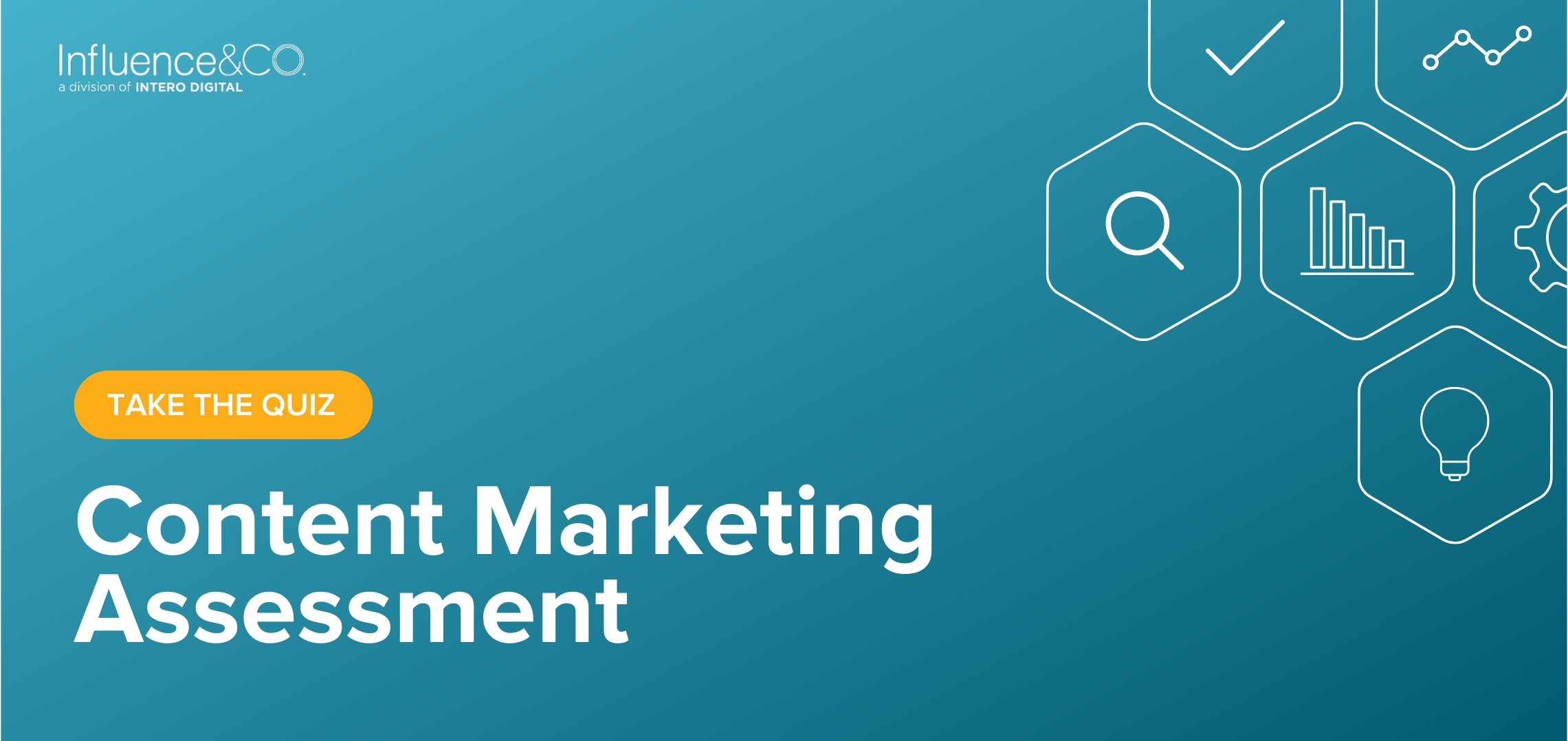Your audience doesn’t experience your marketing like a movie, sitting down to watch a coherent narrative told from beginning to end. They may start at the very beginning of your blog content and read every single post, every whitepaper, and every infographic in the order you published them — but it’s likelier that they won’t.
Because your audience members will jump around, pursuing a particular topic or line of thought, they experience your content more like an ongoing informal conversation. Each piece of content they encounter should be a window into who you are, illustrate what you can do, and prove that you value what they value.
As you create content for each stage, gear it toward where your audience members are in the story — and their own buyer’s journeys — so that you’re not jumping ahead on them or skipping pages. It all needs to come together to make the full story that is your campaign, which should guide the buyer on her journey from awareness, through consideration, all the way to decision and conversion.
That means that each piece of content has to tell its own story while fitting into your larger brand story and content strategy. To do that, you have to meet audiences where they are and tell a story that makes sense to them, no matter how much background they have about your company, product, or service. And that means marrying the elements of narrative structure to the reader’s position in the buyer’s journey.
How the Buyer’s Journey Is Like a Fairy Tale
Think of a fairy tale: A small family lives happily on the edge of the forest until one day misfortune befalls them and the youngest child sets off to seek his fortune. He travels through the woods, meeting and helping creatures in need, until he arrives at the neighboring kingdom.
The king there has set a dangerous task, and the prize for success is marriage to the princess. The price of failure, however, is death. Our hero finds himself overwhelmed by the impossibility of the task and facing mortal peril.
But then! The creatures he helped in his journey arrive and help him in turn, and he completes the task and marries the princess. He has found family, fortune, and a happily ever after. If this story feels familiar, that’s because it follows a foundational narrative structure. Nearly all stories have the same dramatic beats:

An exposition sets the scene: A small family lives happily. Then, an inciting incident sets the action in motion: Misfortune befalls the family. It’s similar to the awareness stage of the buyer’s journey, when a prospect realizes she is experiencing a problem.
The rising action — a series of incidents that ratchet up the dramatic tension — begins when the hero sets out on his journey. Things get more and more complicated for our hero as he travels through the forest and encounters strange creatures. This is a lot like the part of the awareness stage when the prospect is doing research and ventures into the woods of just how complex his problem is. Once a buyer has clearly defined the problem and enters the consideration stage, it’s like when our fairy tale hero arrives in the neighboring kingdom and takes on an epic challenge.
The moment when the hero faces the central problem marks the climax. It’s the turning point of the story — and its most dramatic events. When the hero is facing certain doom and his animal friends save the day, that’s the climax. For a buyer, that’s the decision stage. She has resolved to make a change and has come to a decision on how to do that. Maybe she’s decided that your product or service is the answer, or maybe she’s still comparing vendors. Either way, she has faced the issue and figured out a way to conquer the boss villain.
Now we come to the falling action, in which we see the climax’s results. For our hero, that means confronting the king and establishing a new happy family. For the buyer, it’s not so different: She signs on with you, and you ride off into the sunset together.
4 Steps to Happily Ever After With Customers
While every piece of content should have a beginning, a middle, and an end, knowing what stage of the buyer’s journey an individual piece of content addresses will determine which dramatic beats it should emphasize. Here’s how you can emphasize different dramatic beats to plan a content campaign that will meet audience members where they are and keep them engaged:
1. Use exposition to encourage awareness.
Content that speaks to the awareness stage of the buyer’s journey can help your audience define the problem they are experiencing. Set the scene with information that frames the pain point, orienting them to the problem. It’s not the time to showcase your solution; this is the time to set the scene for the buyer to set off on a journey.
2. Raise the stakes for their consideration.
With content geared toward the consideration stage, show your audience what’s at stake. Map out scenes that illustrate what happens if they don’t solve for their problem — that can be their inciting incident. Lead them into the woods of their problem’s complexity and let them encounter obstacles related to the subtlety and depth of expertise required to solve it. Raise the tension by showing them the resources it would take to create the solution on their own. Scatter breadcrumbs and helpful animals along the way that hint at a solution without explicitly providing the help.
3. Ride in and save the day at the climax.
Just when it seems that your audience can never get out of the woods, slay the dragon, or escape the witch, you charge in on your white horse to save the day. At this point in the journey, the buyer feels pressing need to fix the situation, so she becomes less problem-focused and more solution-oriented. It’s the turning point between realizing the problem and finding the solution, and of course, that solution (or knight in shining armor, perhaps) is you and your brand. Content that hits at the decision stage — whitepapers, case studies, and sales enablement content — can more explicitly solve the problem.
4. Resolve the conflict and live happily ever after.
Once the hero — or the buyer — has triumphed by making a decision, she becomes part of your family. Content at this stage can set the stage for the long-term relationship between brand and customer. Help the buyer tie up loose ends and start her happily ever after.
Your story as a marketer doesn’t end. Each piece of content has a beginning and an end, but your customer’s journey and your brand’s value proposition are stories that intersect and grow increasingly intertwined as time goes by.
Are you creating the right content for your goals? Answer a few simple questions about your content marketing efforts to receive a Content Marketing Assessment and learn more!









